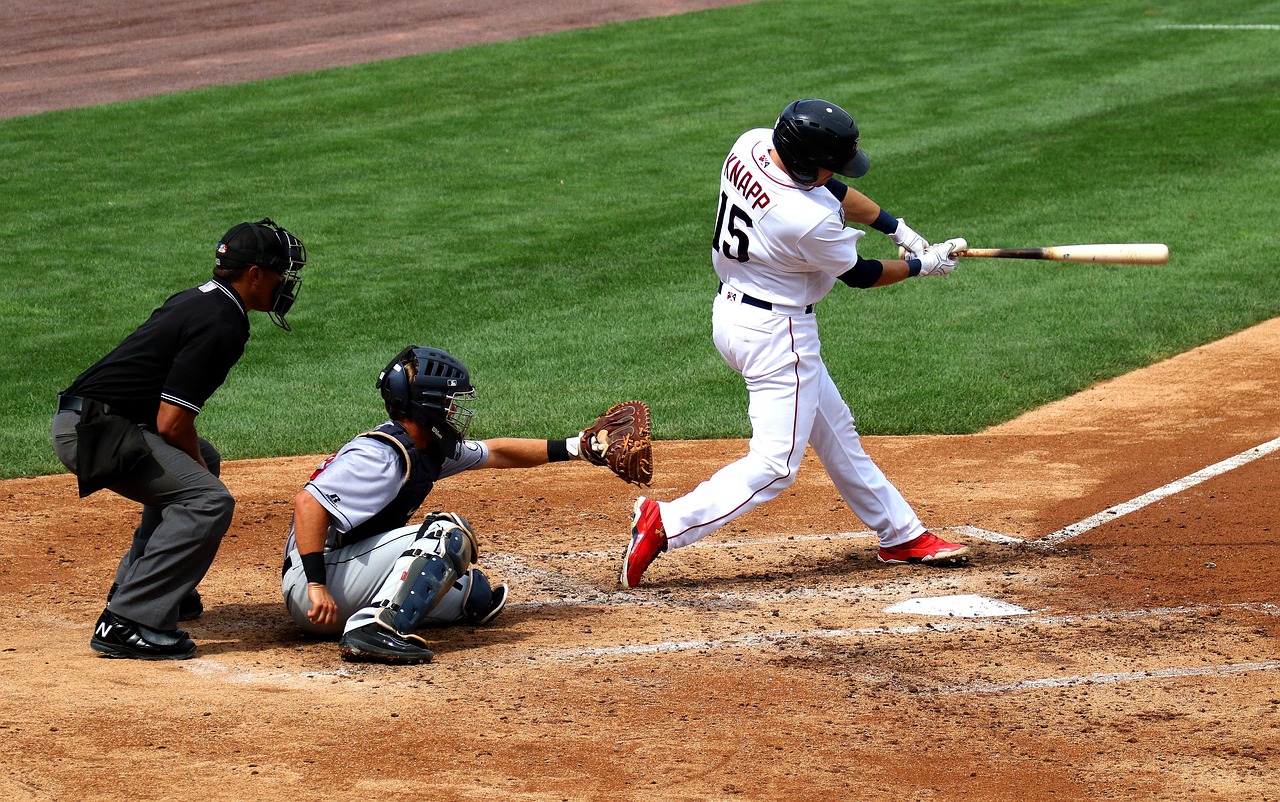This article explores effective strategies and techniques for increasing bat speed, offering insights and practical tips to enhance your swing for better performance in baseball or softball.
Understanding Bat Speed
Bat speed is a crucial element in hitting, impacting the distance and accuracy of the ball. Bat speed refers to the speed at which the bat travels through the hitting zone. A higher bat speed can lead to more powerful hits, allowing players to drive the ball further. Understanding how bat speed works is essential for players of all levels, as it directly correlates with performance on the field. Whether you are a beginner or an advanced player, focusing on bat speed can significantly enhance your hitting capabilities.
Importance of Bat Speed in Hitting
Bat speed significantly influences a player’s ability to hit the ball effectively. Increased bat speed can lead to improved performance and better results in games. When players can swing the bat faster, they have a greater chance of making solid contact with the ball, which can translate into more hits, home runs, and overall offensive production. Furthermore, a faster bat can help players adjust to different pitch speeds, making it easier to hit a variety of pitches.
Factors Affecting Bat Speed
Several factors contribute to bat speed, including physical conditioning, technique, and equipment. Physical strength and flexibility play a significant role in generating bat speed. Additionally, the player’s swing mechanics and grip can also affect how fast the bat moves through the zone. Understanding these factors is essential for players aiming to enhance their swing and overall performance.
Physical Conditioning for Bat Speed
Improving bat speed requires a focus on physical conditioning. Players should engage in a balanced training regimen that includes strength training, flexibility exercises, and agility drills. Strength training is vital for increasing bat speed, as it builds the muscles used during a swing. Exercises such as squats, lunges, and core workouts can enhance overall strength.
- Strength Training Exercises: Incorporating exercises that target the core, legs, and upper body can significantly enhance bat speed. These exercises help build the necessary power for a strong swing.
- Flexibility and Mobility Workouts: Stretching routines and mobility exercises can improve range of motion, which is crucial for achieving optimal bat speed.
Swing Mechanics and Technique
Proper swing mechanics are essential for maximizing bat speed. Players should focus on their grip and stance, as slight adjustments can lead to increased bat speed. For instance, a relaxed grip can facilitate a smoother swing, while a solid stance provides a stable foundation.
- Grip and Stance Adjustments: Players should experiment with their grip pressure and stance width to find what feels most comfortable and effective for their swing.
- Rotational Power in the Swing: Understanding how to harness body rotation effectively during the swing can lead to maximum impact and increased bat speed.
Using Technology to Measure Bat Speed
Technology plays a crucial role in modern training. Tools such as bat speed sensors and mobile apps offer real-time data on performance. This technology can assist players in tracking their progress and making necessary adjustments to their technique.
- Bat Speed Sensors and Apps: These devices provide immediate feedback, allowing players to see improvements and areas that need work.
- Video Analysis for Improvement: Utilizing video feedback can help players identify flaws in their swing mechanics and make adjustments accordingly.
Drills to Improve Bat Speed
Practicing specific drills can lead to significant improvements in bat speed. Incorporating drills such as one-handed bat swings and weighted bat training can enhance strength and control, ultimately leading to a faster swing.
- One-Handed Bat Drills: These drills focus on developing strength and control in the swing, making them essential for bat speed improvement.
- Weighted Bat Training: Using a weighted bat during practice can help players build the necessary muscle memory for a faster swing.
Nutrition and Recovery for Optimal Performance
Nutrition and recovery are essential for maximizing athletic performance. A balanced diet that supports muscle growth and energy levels is vital for players looking to improve their bat speed. Additionally, proper recovery techniques, such as rest and stretching, can enhance overall athletic performance.
- Pre-Game Nutrition Tips: Consuming the right foods before a game can fuel performance and sustain energy levels.
- Importance of Recovery and Rest: Recovery is crucial for muscle repair and growth, allowing players to maintain their training intensity.
Setting Goals for Bat Speed Improvement
Setting clear and achievable goals is vital for tracking progress. Players should establish both short-term and long-term goals to measure their improvement over time. Regularly tracking progress allows for necessary adjustments to training regimens and techniques.
- Short-Term vs. Long-Term Goals: Understanding the difference between these goals can help players create a balanced approach to their training.
- Tracking Progress and Adjusting Goals: Utilizing performance metrics can help players stay motivated and focused on their improvement journey.

Understanding Bat Speed
Bat speed is a crucial aspect of hitting that can significantly influence a player’s performance in both baseball and softball. It refers to the speed at which the bat moves through the hitting zone, and it plays a vital role in determining how far and accurately a ball travels after being struck. In this section, we will explore the definition of bat speed, its importance, and the factors that contribute to its development.
What is Bat Speed?
Bat speed is the measure of how quickly a batter can swing their bat. It is typically measured in miles per hour (mph) and is influenced by various factors, including physical strength, technique, and equipment. A higher bat speed generally leads to greater distance and accuracy when hitting the ball, making it an essential skill for players at all levels.
Why Does Bat Speed Matter?
For players, understanding bat speed is crucial for several reasons:
- Distance: Increased bat speed can lead to longer hits. When a player makes contact with the ball at higher speeds, it generates more kinetic energy, allowing the ball to travel further.
- Accuracy: Players with optimal bat speed can better control their swings, resulting in more precise hits. This accuracy is vital for targeting specific areas of the field.
- Timing: Bat speed affects how well a player can time their swing. A faster swing can compensate for a late pitch, giving players a better chance to connect with the ball.
Who Benefits from Improving Bat Speed?
Players of all ages and skill levels can benefit from improving their bat speed. For youth players, developing bat speed early on can set the foundation for future success in the sport. For high school and college athletes, increased bat speed can lead to better performance and opportunities for advancement. Even professional players continually seek ways to enhance their bat speed to maintain their competitive edge.
How is Bat Speed Measured?
Bat speed can be measured using various tools, including radar guns and specialized sensors. These devices provide real-time feedback, allowing players to track their progress and make necessary adjustments to their swing mechanics. Regularly measuring bat speed can help players identify strengths and weaknesses, guiding them in their training efforts.
Conclusion
In summary, understanding bat speed is essential for any player looking to enhance their hitting skills. By recognizing its significance and the factors that contribute to it, players can focus on developing their bat speed through targeted training and practice. This foundational knowledge will not only improve individual performance but also contribute to overall team success in the game.

Importance of Bat Speed in Hitting
Bat speed is one of the most critical factors that can determine a player’s success at the plate. It significantly influences a player’s ability to make solid contact with the ball, which in turn affects the distance and accuracy of the hit. When a player can generate a higher bat speed, they are more likely to achieve better results in games, making it essential for players of all levels to understand its importance.- Increased Power: A faster bat speed translates to greater power behind the hit. This is because the kinetic energy generated during the swing is directly related to the speed of the bat at the point of contact. Players who can swing their bats faster can send the ball flying further, which is crucial for hitting home runs and driving in runs.
- Improved Timing: Higher bat speeds can also improve a player’s timing. When a player can generate more speed, they have a better chance of catching up to faster pitches, allowing them to make contact more consistently. This is particularly important in today’s game, where pitchers are throwing harder than ever.
- Enhanced Bat Control: While it may seem counterintuitive, increased bat speed can actually improve a player’s control over their swing. With proper technique, players can utilize their body mechanics to direct the bat more effectively, resulting in better placement of the ball and fewer strikeouts.
- Psychological Edge: Players who can consistently generate high bat speeds often feel more confident at the plate. This psychological advantage can lead to improved performance, as confidence plays a significant role in a player’s ability to execute their skills under pressure.
Moreover, the importance of bat speed extends beyond just individual performance. In team sports like baseball and softball, a player’s ability to hit the ball effectively contributes to the overall success of the team. Teams with players who can generate higher bat speeds tend to score more runs and win more games. Therefore, focusing on improving bat speed should be a priority for both players and coaches alike.
In conclusion, bat speed is a vital aspect of hitting that impacts a player’s performance significantly. By understanding its importance and implementing strategies to increase bat speed, players can enhance their skills and contribute more effectively to their team’s success. Whether through physical conditioning, technique refinement, or mental preparation, every player has the potential to improve their bat speed and, consequently, their overall game performance.

Factors Affecting Bat Speed
Bat speed is an essential component of a successful swing in baseball and softball. It directly influences a player’s ability to make solid contact with the ball, which can lead to better performance and results on the field. Several factors contribute to bat speed, including physical conditioning, technique, and equipment. Understanding these elements can help players enhance their swing and overall game.
Physical Conditioning
Physical conditioning is foundational for achieving optimal bat speed. Players must focus on developing their strength, flexibility, and overall fitness levels. A well-rounded conditioning program includes:
- Strength Training: Exercises that target the core, legs, and upper body can significantly enhance the power generated during a swing. Compound movements like squats, deadlifts, and bench presses are particularly effective.
- Cardiovascular Fitness: Maintaining good cardiovascular health ensures that players have the stamina needed for prolonged performance during games and practices.
- Flexibility and Mobility: Incorporating stretching routines and mobility drills can improve range of motion, allowing for a more fluid swing.
Technique
The way a player swings the bat is crucial for maximizing bat speed. Proper technique involves several elements:
- Grip: The way a player grips the bat can influence their swing speed. A relaxed grip allows for quicker movements, while a tight grip can hinder performance.
- Stance: A balanced stance provides a solid foundation for generating power. Players should ensure their feet are shoulder-width apart and their weight is distributed evenly.
- Follow-Through: A complete follow-through not only helps in maintaining balance but also ensures that the maximum speed is achieved at the point of contact.
Equipment
The type of bat used can also affect bat speed. Players should consider the following:
- Bat Weight: A lighter bat can be swung faster, but it may sacrifice power. Conversely, a heavier bat can generate more force but may reduce swing speed.
- Bat Material: Different materials, such as aluminum or composite, can influence the feel and performance of the bat, impacting swing dynamics.
- Bat Length: The correct bat length is essential for maximizing swing speed. A bat that is too long or too short can hinder a player’s ability to control their swing.
In summary, improving bat speed requires a multifaceted approach that addresses physical conditioning, technique, and equipment. By focusing on these key factors, players can enhance their swing performance and achieve better results on the field.

Physical Conditioning for Bat Speed
Improving bat speed is essential for any player looking to enhance their performance on the field. A crucial aspect of achieving this goal is focusing on physical conditioning. This section will delve into various exercises and training regimens that not only boost your strength but also enhance flexibility and overall athleticism, ultimately leading to improved bat speed.
To effectively increase bat speed, players must engage in a combination of strength training, flexibility exercises, and sport-specific drills. Below, we explore these components in detail:
- Strength Training: Building core strength is vital for generating power during your swing. Focus on exercises like squats, deadlifts, and bench presses, which target the major muscle groups involved in hitting. Incorporating plyometric exercises such as box jumps or medicine ball throws can also enhance explosive power.
- Flexibility and Mobility: Flexibility allows for a greater range of motion, which is crucial for an effective swing. Regular stretching routines, including dynamic stretches before workouts and static stretches post-exercise, can improve flexibility. Yoga can also be beneficial in enhancing balance and core stability.
- Sport-Specific Drills: Incorporating drills that mimic the swinging motion can help reinforce muscle memory. One effective drill is the one-handed bat drill, which strengthens the muscles used in the swing while improving control and technique. Another is the use of a weighted bat during practice to build strength and speed.
Additionally, conditioning should not be limited to just physical exercises. Proper nutrition plays a significant role in enhancing athletic performance. Consuming a balanced diet rich in protein, carbohydrates, and healthy fats is essential for muscle recovery and energy. Hydration is equally important, as it affects overall performance and recovery.
Lastly, it is crucial to incorporate adequate recovery time into your training regimen. Overtraining can lead to fatigue and injuries, which can hinder your progress. Aim for a balanced routine that includes rest days and active recovery sessions to allow your body to heal and adapt.
By focusing on these elements of physical conditioning, players can significantly enhance their bat speed, leading to better performance on the field. Remember, consistency and dedication to your training regimen are key to achieving your goals.
Strength Training Exercises
Strength training is an essential component of any athlete’s training regimen, particularly for those looking to increase their bat speed. By focusing on specific exercises that target the muscles engaged during a swing, players can enhance their overall power and performance on the field. This section will delve into a variety of strength training exercises that are particularly beneficial for developing the necessary strength and explosiveness for a more powerful swing.
To effectively increase bat speed, players should concentrate on exercises that strengthen the core, upper body, and lower body. These muscle groups are integral to generating the force needed during a swing. Below are some of the most effective exercises:
- Squats: This foundational exercise targets the quadriceps, hamstrings, and glutes. By building lower body strength, players can improve their stability and power during the swing.
- Deadlifts: Deadlifts engage multiple muscle groups, including the back, glutes, and hamstrings. They help in developing overall strength and are particularly effective for enhancing the explosive power needed for bat speed.
- Bench Press: Strengthening the chest, shoulders, and triceps through bench presses can contribute to a more powerful swing. A strong upper body allows for better control and speed during the swing.
- Rotational Medicine Ball Throws: This exercise mimics the rotational movement of a swing, making it especially relevant. It helps in developing the core strength and rotational power necessary for an effective swing.
- Pull-Ups: This exercise targets the upper back and arms, which are crucial for maintaining a strong grip and control during the swing. Improved upper body strength translates to better bat speed.
- Lunges: Lunges not only strengthen the legs but also improve balance and coordination, which are vital for a proper swing mechanics.
Incorporating these exercises into a regular training routine can lead to significant improvements in bat speed. It is important for players to focus on proper form and gradually increase the weight as their strength improves. Additionally, players should consider working with a coach or trainer to tailor a strength training program that meets their specific needs and goals.
Moreover, combining strength training with flexibility and mobility workouts will further enhance bat speed. As players develop strength, they must also ensure they maintain a full range of motion to execute an effective swing. This holistic approach to training will not only increase bat speed but also reduce the risk of injury, allowing players to perform at their best throughout the season.
Flexibility and Mobility Workouts
are essential components for enhancing bat speed in baseball and softball. These workouts focus on improving the range of motion, which is critical for executing an effective swing. By incorporating flexibility and mobility routines into your training regimen, you can optimize your swing mechanics and, ultimately, your performance on the field.
To begin, it’s important to understand that flexibility refers to the ability of your muscles and connective tissues to stretch, while mobility involves the range of motion in your joints. Both aspects are crucial for athletes, particularly those who rely on explosive movements like swinging a bat. Here, we will explore various stretching routines and mobility exercises that can help improve your overall athletic performance.
Incorporating a variety of stretching techniques can significantly enhance flexibility. Here are some effective stretching routines:
- Dynamic Stretching: This involves moving parts of your body through their full range of motion. Examples include arm circles, leg swings, and torso twists. Dynamic stretching is particularly beneficial before practice or games as it prepares your muscles for action.
- Static Stretching: After your workout, static stretches can help improve flexibility. Focus on major muscle groups such as hamstrings, quadriceps, and shoulders. Hold each stretch for 15-30 seconds to allow muscles to relax and elongate.
- PNF Stretching: Proprioceptive Neuromuscular Facilitation (PNF) involves a partner-assisted stretching technique that can enhance flexibility. This method combines stretching and contracting of the muscle group being targeted, resulting in greater flexibility gains.
Mobility exercises are designed to improve joint function and overall movement quality. Consider adding these exercises to your routine:
- Hip Openers: Exercises like the pigeon pose and hip flexor stretches can significantly improve hip mobility, which is vital for a powerful swing.
- Thoracic Spine Mobility: Incorporate exercises such as the cat-cow stretch and thoracic rotations to enhance upper body mobility, allowing for better rotation during your swing.
- Ankle Mobility Drills: Improving ankle flexibility can positively affect your stance and balance. Try ankle circles and wall stretches to enhance mobility in this area.
In conclusion, flexibility and mobility workouts are indispensable for athletes looking to improve their bat speed. By incorporating a variety of stretching routines and mobility exercises into your training, you can enhance your range of motion and optimize your swing mechanics. Remember to listen to your body and adjust your routines as needed to ensure effective and safe training.

Swing Mechanics and Technique
When it comes to enhancing bat speed, proper swing mechanics are critical. A well-executed swing not only maximizes bat speed but also improves accuracy and power at the plate. In this section, we will delve into the fundamentals of a good swing and provide practical tips for refining your technique.
The first aspect to consider is your grip. A proper grip on the bat allows for better control and transfer of power. It’s essential to hold the bat firmly but not too tight, as a relaxed grip can lead to a smoother swing. Experimenting with different grips can help you find the one that feels most comfortable and effective for your swing.
Next, let’s discuss the stance. Your stance sets the foundation for your swing. A balanced stance with feet shoulder-width apart allows for optimal weight distribution. Ensure your knees are slightly bent, and your weight is evenly distributed on the balls of your feet. This position enables you to react quickly to pitches and generate more power during your swing.
Another vital element is timing. Timing is crucial for connecting with the ball effectively. Focus on your pitch recognition skills to anticipate the pitch type and speed. As the pitcher winds up, practice your load, which involves shifting your weight back slightly to prepare for the swing. This movement helps generate momentum and power as you step forward to hit the ball.
Incorporating rotational power into your swing can significantly enhance bat speed. This involves using your hips and core to create torque. As you initiate your swing, think about turning your hips towards the pitcher while keeping your upper body back. This technique allows for a more explosive swing, resulting in increased bat speed and distance.
Another often overlooked aspect is follow-through. A complete follow-through ensures that you have fully committed to your swing. It helps maintain balance and control after contact with the ball. Practice your follow-through to ensure that your swing is fluid and powerful, as this can contribute to improved bat speed over time.
To refine your swing mechanics, consider utilizing video analysis. Recording your swings allows you to visually assess your technique and identify areas for improvement. Look for inconsistencies in your grip, stance, and follow-through. By making adjustments based on your observations, you can work towards achieving a more efficient and powerful swing.
In conclusion, mastering swing mechanics is essential for maximizing bat speed. By focusing on grip, stance, timing, rotational power, and follow-through, players can refine their technique and enhance their performance at the plate. Regular practice and self-assessment will lead to continuous improvement and greater success in baseball or softball.
Grip and Stance Adjustments
are critical components in enhancing your swing mechanics and overall bat speed. Many players underestimate the impact of these foundational elements, often leading to suboptimal performance on the field. In this section, we will explore how minor tweaks to your grip and stance can create significant improvements in your hitting capabilities.
The grip on the bat is the first point of contact and plays a pivotal role in how effectively you can control the bat through the swing. A common mistake is holding the bat too tightly, which can restrict wrist movement and reduce swing speed. Instead, aim for a grip that is firm yet relaxed. This allows for greater wrist flexibility and quicker bat speed. A good rule of thumb is to ensure that your knuckles align; this configuration helps in achieving a more natural swing path.
Equally important is your stance. A proper stance sets the foundation for a powerful swing. Players should adopt a stance that feels comfortable yet athletic. Feet should be shoulder-width apart, with weight evenly distributed. This position not only provides balance but also allows for a more explosive movement as you initiate your swing. Adjusting your stance slightly forward or backward can also have a dramatic effect on your swing mechanics. For instance, a slightly wider stance can enhance stability, while a narrower stance may improve agility.
Another aspect to consider is the angle of your elbows. Keeping your elbows relaxed and slightly bent can facilitate a smoother swing. If your elbows are too rigid or too far away from your body, it can lead to a less efficient swing path. A relaxed upper body helps in generating more bat speed, as it allows for a fluid motion through the hitting zone.
- Key Tips for Grip Adjustments:
- Ensure your grip is relaxed to allow for wrist movement.
- Align your knuckles for better control.
- Experiment with different grip pressures to find what works best for you.
- Key Tips for Stance Adjustments:
- Maintain a balanced posture with weight evenly distributed.
- Keep your feet shoulder-width apart for stability.
- Adjust your stance based on your comfort and swing style.
Incorporating these adjustments into your practice routine can lead to noticeable improvements in your swing mechanics and bat speed. Regularly reviewing your grip and stance with a coach or using video analysis can help you identify areas for improvement. Remember, the goal is to create a swing that feels natural and powerful, enabling you to make consistent contact with the ball.
Ultimately, mastering grip and stance adjustments is about finding what works best for you. As you experiment with different techniques, pay attention to how each change affects your swing speed and hitting performance. With diligence and practice, these minor adjustments can lead to major improvements on the field.
Rotational Power in the Swing
Understanding how to effectively harness rotational power can significantly enhance bat speed, which is crucial for maximizing performance in baseball and softball. The swing is not just about arm strength; it involves a complex interplay of body mechanics that, when executed correctly, can lead to powerful hits. This section delves into the mechanics of body rotation and how players can leverage this aspect for greater impact.
- What is Rotational Power? Rotational power refers to the force generated through the rotation of the body during the swing. It involves the coordinated movement of the hips, torso, and shoulders, allowing for a more dynamic and powerful swing.
- Why is Body Rotation Important? Proper body rotation is essential for transferring energy from the lower body through to the bat. When players rotate their hips and shoulders effectively, they can generate more speed and power, resulting in better contact with the ball.
To harness rotational power, players should focus on the following techniques:
1. **Hip Rotation**: Initiating the swing with a strong hip rotation is vital. Players should practice drills that emphasize starting the swing from the hips rather than the arms. This helps to create a powerful torque that adds speed to the bat.2. **Core Engagement**: A strong core stabilizes the body during the swing. Exercises such as planks and medicine ball twists can enhance core strength, enabling better control over rotational movements.3. **Sequential Movement**: The swing should be a sequential movement, starting from the feet, moving through the hips, and then to the upper body. This chain reaction maximizes energy transfer and bat speed.4. **Follow-Through**: A proper follow-through is crucial for maintaining balance and ensuring that the rotational power is fully utilized. Players should practice finishing their swings with their body facing the field to reinforce this technique.
Incorporating these techniques into practice can lead to significant improvements in bat speed. Players can also benefit from video analysis to observe their swing mechanics. By reviewing footage, they can identify any inefficiencies in their body rotation and make necessary adjustments.
Moreover, working with a coach can provide personalized feedback on how to optimize body rotation. Coaches can offer insights into specific drills that target rotational strength and mechanics, ensuring that players are effectively using their body to enhance their swing.
In conclusion, understanding and effectively utilizing rotational power is essential for players looking to increase their bat speed. By focusing on hip rotation, core engagement, sequential movement, and proper follow-through, athletes can harness their body’s potential to deliver powerful swings. This not only leads to improved performance but also enhances overall enjoyment of the game, as players see tangible results from their hard work and dedication.

Using Technology to Measure Bat Speed
Technology has revolutionized the way athletes train and improve their skills, particularly in sports like baseball and softball. One of the most significant advancements is the ability to measure bat speed using various tools and devices. Understanding these technologies not only helps players optimize their performance but also provides them with the necessary feedback to make informed adjustments.
Bat Speed Sensors and Mobile Apps
Bat speed sensors are innovative devices that can be attached to the bat or worn by the player. These sensors provide real-time data on bat speed, swing mechanics, and even the angle of the swing. Many mobile applications are available that sync with these sensors, allowing players to track their progress over time. For instance, apps can display graphs and statistics that highlight improvements or areas needing attention.
Using these technologies, players can conduct self-assessments and adjust their training regimens accordingly. For example, if a player notices a decline in bat speed during practice, they can analyze their swing mechanics through the app and make necessary adjustments. This immediate feedback loop is invaluable for continuous improvement.
Video Analysis for Improvement
Another powerful tool in measuring bat speed is video analysis. By recording swings from different angles, players can visually assess their technique and identify areas for improvement. Video analysis software can slow down footage, allowing players to examine the nuances of their swing mechanics.
Coaches can also use video analysis to provide constructive feedback. For instance, they might point out issues with grip, stance, or follow-through that could be affecting bat speed. By combining video analysis with bat speed measurements, players gain a comprehensive understanding of their performance, enabling them to make targeted improvements.
Wearable Technology
Wearable technology, such as smartwatches and fitness trackers, can also contribute to measuring bat speed. These devices often come with sensors that monitor overall athletic performance, including metrics like heart rate and calorie expenditure. While they may not specifically measure bat speed, they can provide insights into a player’s physical condition, which directly influences swing power and speed.
Incorporating wearable technology into training routines allows players to understand how their physical fitness correlates with their batting performance. For example, a player might discover that increased cardiovascular fitness leads to better endurance during games, ultimately impacting their bat speed.
Integrating Technology into Training
To maximize the benefits of technology in measuring bat speed, players should integrate these tools into their regular training sessions. Setting up a routine where they use bat speed sensors, video analysis, and wearable technology can create a comprehensive training environment.
Players should establish specific goals for each session, such as increasing bat speed by a certain percentage or improving swing mechanics based on video feedback. By tracking these goals using technology, players can maintain motivation and accountability in their training.
The Future of Bat Speed Measurement
As technology continues to evolve, the methods for measuring bat speed are likely to become even more sophisticated. Innovations such as augmented reality and advanced biomechanics could provide deeper insights into swing mechanics and bat speed.
Players and coaches should stay informed about the latest technological advancements to ensure they are utilizing the best tools available for their training. Embracing technology not only enhances individual performance but also contributes to the overall development of the sport, pushing the boundaries of what athletes can achieve.
In conclusion, leveraging technology for measuring bat speed offers players valuable insights and feedback. By using bat speed sensors, video analysis, and wearable technology, athletes can make informed adjustments to their training, ultimately leading to improved performance on the field. As technology continues to advance, the potential for enhancing bat speed will only grow, making it an exciting time for players and coaches alike.
Bat Speed Sensors and Apps
In the world of baseball and softball, technology has revolutionized the way players train and improve their skills. Among the most significant advancements are bat speed sensors and mobile applications that provide real-time data on performance. These tools are not just gadgets; they are essential for players who want to enhance their game by tracking their progress and making necessary adjustments.
Bat speed sensors are devices that attach to the bat or are integrated into the bat itself. They measure the speed of the bat as it swings, providing players with immediate feedback. This data is crucial because it allows players to understand their swing mechanics better. For instance, a player can identify whether they are generating enough speed at the point of contact with the ball. This information is invaluable for making adjustments to their technique, which can lead to improved performance on the field.
Mobile apps complement these sensors by offering a platform to analyze the data collected. Many of these applications come with features that allow players to track their stats over time, compare their performance against benchmarks, and even share their results with coaches or teammates. This aspect of accountability can motivate players to strive for better results. Additionally, some apps provide instructional videos and tips based on the data collected, making it easier for players to implement changes in their training regimen.
Moreover, these technologies cater to players at all levels, from beginners to professionals. For young athletes, using bat speed sensors can help instill good habits early on, ensuring they develop a proper swing technique. For seasoned players, the ability to analyze minute details of their swing can be the difference between success and failure in competitive situations.
Another significant advantage of bat speed sensors and mobile apps is their ability to foster a more engaging training environment. Players can set personal goals, track their progress, and even compete with friends or teammates through various challenges. This gamification of training can make practice sessions more enjoyable and productive, encouraging players to put in the necessary work to improve their skills.
In conclusion, bat speed sensors and mobile applications are transforming how players approach their training. By providing real-time data and analysis, these technologies empower athletes to take control of their development and make informed adjustments to their swing mechanics. As technology continues to evolve, players who leverage these tools will likely find themselves at a competitive advantage on the field.
Video Analysis for Improvement
Video analysis has revolutionized the way athletes approach their training, particularly in sports like baseball and softball. By providing a visual representation of swing mechanics, players can gain invaluable insights into their performance. This section delves into how video feedback can be leveraged to identify areas for improvement and refine techniques, ultimately leading to enhanced bat speed and hitting effectiveness.
Video analysis involves recording and reviewing an athlete’s performance to assess their technique and mechanics. In the context of baseball and softball, this means capturing the swing from multiple angles to evaluate various aspects, such as timing, body positioning, and follow-through. By analyzing these elements, players can pinpoint weaknesses that may be hindering their performance.
- Enhanced Self-Awareness: Players can see their swings in real-time, allowing them to recognize bad habits that may not be apparent during live practice.
- Objective Assessment: Video provides an unbiased perspective, enabling players to focus on specific areas for improvement without relying solely on subjective feedback from coaches.
- Progress Tracking: Regularly reviewing video footage allows players to monitor their improvements over time, making it easier to set and achieve performance goals.
To make the most of video analysis, players should follow a structured approach:
- Record Regularly: Consistent recording during practice sessions helps capture a variety of swings and conditions.
- Focus on Key Metrics: Players should concentrate on specific aspects of their swing, such as bat path, weight transfer, and hip rotation.
- Seek Expert Feedback: Collaborating with coaches or experienced analysts can provide additional insights that enhance the learning process.
Video analysis can reveal several common issues in swing mechanics:
- Timing Issues: Players may struggle with timing their swing, leading to inconsistent contact with the ball.
- Improper Grip and Stance: An incorrect grip or stance can significantly affect swing mechanics and bat speed.
- Body Mechanics: Poor body mechanics, such as insufficient hip rotation or weight transfer, can hinder swing power.
Incorporating video analysis into training requires a strategic approach:
- Schedule Regular Review Sessions: Dedicate specific times for players to review their footage, ensuring it becomes a routine part of their training.
- Combine with Drills: Use insights gained from video analysis to inform practice drills that target identified weaknesses.
- Stay Positive: Encourage a growth mindset, focusing on improvements rather than solely on mistakes.
Overall, video analysis serves as a powerful tool for players aiming to enhance their swing mechanics. By leveraging technology effectively, athletes can gain deeper insights into their performance, leading to improved bat speed and overall hitting effectiveness.

Drills to Improve Bat Speed
Improving bat speed is a crucial aspect of enhancing overall hitting performance in baseball and softball. Incorporating targeted drills into your training routine can lead to significant gains in bat speed, allowing players to hit the ball harder and farther. This section outlines various drills that players of all levels can integrate into their practice to boost their bat speed effectively.
- One-Handed Bat Drills: These drills focus on building strength and control in each hand, which is essential for a powerful swing. Players can practice swinging with one hand at a time, alternating between their dominant and non-dominant hands. This method not only strengthens grip but also helps players develop better hand-eye coordination.
- Weighted Bat Training: Using a weighted bat during practice can improve swing mechanics and speed. Players should start with a bat that is slightly heavier than their regular bat and perform short swings to build muscle memory and strength. It’s important to gradually increase the weight and duration of these drills to avoid strain.
- Bat Speed Bands: Resistance bands can be a great tool for developing bat speed. Players can attach bands to a stationary object and perform swinging motions against the resistance. This drill helps in enhancing both strength and speed, as players learn to accelerate through their swings.
- Medicine Ball Throws: Incorporating medicine ball throws into your training can improve your rotational power, which is vital for bat speed. Players can perform rotational throws against a wall or with a partner, focusing on using their core and hips to generate power, similar to the mechanics of a baseball swing.
- Soft Toss Drills: Soft toss drills allow players to focus on their swing mechanics without the pressure of a live pitch. A partner tosses the ball underhand, giving the player time to concentrate on their swing path and bat speed. This drill can be modified by varying the distance and angle of the toss to challenge the player further.
- Speed Ladder Drills: While not directly related to swinging, agility drills using a speed ladder can enhance foot speed and overall athleticism, which indirectly contributes to better bat speed. Quick feet lead to better positioning and balance during a swing.
Incorporating these drills into your routine can lead to substantial improvements in bat speed over time. Consistency is key; players should aim to practice these drills regularly while monitoring their progress. By focusing on strength, mechanics, and overall athleticism, players can develop a more powerful swing and enhance their hitting performance.
One-Handed Bat Drills
are an essential part of training for baseball and softball players looking to enhance their swing mechanics and bat speed. These drills focus on developing both strength and control in a player’s swing, which can lead to improved performance on the field. By isolating each hand during practice, players can identify and rectify weaknesses, ultimately leading to a more powerful and efficient swing.
One-handed drills allow players to concentrate on the specific mechanics of their swing without the distraction of using both hands. This focused approach helps in developing muscle memory and ensuring that each hand contributes effectively to the swing. As players perform these drills, they can work on their grip, wrist action, and overall hand-eye coordination, which are crucial for making solid contact with the ball.
Incorporating into regular practice routines can yield significant improvements in bat speed. Here are some key benefits:
- Strength Development: Isolating each hand helps in building strength in the wrists and forearms, which are vital for generating bat speed.
- Improved Control: These drills enhance a player’s ability to control the bat, allowing for better aim and precision when hitting.
- Enhanced Swing Mechanics: By practicing with one hand, players can focus on the correct mechanics of their swing, ensuring that they are using their body effectively.
- Increased Bat Speed: As strength and control improve, players often see a natural increase in their bat speed, leading to more powerful hits.
To perform one-handed bat drills, players can follow these steps:
1. Start with a light bat to ensure proper form and technique.2. Begin with the dominant hand, holding the bat with a firm grip.3. Practice swinging the bat in a controlled manner, focusing on the mechanics of the swing.4. Alternate to the non-dominant hand and repeat the process.5. Gradually increase the intensity and speed of the swings as confidence and strength build.
Additionally, players can incorporate variations of one-handed drills, such as:
- One-Handed Tee Work: Place a tee at the appropriate height and practice hitting the ball with one hand.
- Soft Toss with One Hand: Have a partner toss balls while the player swings with one hand.
- Resistance Band Training: Use resistance bands to simulate the swing motion while focusing on one hand at a time.
In conclusion, are a highly effective way to enhance a player’s swing mechanics and bat speed. By focusing on strength and control, players can identify weaknesses and work towards becoming more proficient hitters. Regular practice of these drills can lead to significant improvements in performance on the field, making them an invaluable addition to any training regimen.
Weighted Bat Training
Using a weighted bat during practice sessions can significantly enhance a player’s swing speed, making it a popular training method among athletes. This technique involves swinging a bat that is heavier than the standard game bat, which can lead to a variety of performance improvements when done correctly.
Benefits of Weighted Bat Training
One of the primary benefits of using a weighted bat is the development of **muscle strength** and **explosiveness**. When players swing a heavier bat, they engage their core, arms, and shoulders more intensely, leading to increased muscle activation. This added strength translates into better swing mechanics and, ultimately, greater bat speed when using a standard bat during games.
Additionally, weighted bat training can improve a player’s **swing mechanics**. The extra weight forces players to focus on their form, helping them develop a more efficient swing path. This focus on technique can lead to more consistent contact with the ball, enhancing overall hitting performance.
Incorporating Weighted Bat Training Safely
While the benefits of weighted bat training are clear, it is essential to incorporate this method safely to avoid injury. Players should start with a bat that is only slightly heavier than their regular bat to prevent strain. Gradually increasing the weight as they grow stronger will help in building endurance without risking injury.
It is also crucial to limit the number of swings taken with a weighted bat during practice. Experts recommend using the weighted bat for no more than 10-15 swings per session. This approach allows players to reap the benefits without overexerting their muscles.
Combining Weighted Bat Training with Other Drills
To maximize the effectiveness of weighted bat training, players should combine it with other drills. Incorporating **one-handed bat drills** can help develop strength and control, while agility drills can enhance overall athleticism. By integrating these training methods, players can create a comprehensive workout routine that targets various aspects of their game.
Monitoring Progress
As with any training regimen, monitoring progress is vital. Players should keep track of their swing speed and overall performance to see how weighted bat training is impacting their game. Using technology, such as bat speed sensors, can provide real-time feedback and help players adjust their training accordingly.
In conclusion, weighted bat training can significantly enhance swing speed and improve overall hitting performance when done safely and effectively. By understanding the benefits, incorporating the training method wisely, and combining it with other drills, players can take their batting skills to the next level.

Nutrition and Recovery for Optimal Performance
Nutrition and recovery are critical components for maximizing athletic performance. In the realm of sports, particularly in baseball and softball, players often focus on their techniques and physical conditioning. However, the role of proper nutrition and effective recovery techniques cannot be overstated. This section will delve into dietary strategies and recovery methods that specifically support the enhancement of bat speed, ultimately leading to improved performance on the field.
A well-balanced diet is essential for athletes, providing the necessary fuel for training and competition. Macronutrients such as carbohydrates, proteins, and fats play distinct roles in energy production, muscle repair, and overall health. Carbohydrates are crucial for providing immediate energy, while proteins are vital for repairing and building muscle tissue. Healthy fats also contribute to sustained energy levels and support cellular functions.
- Carbohydrates: Aim for complex carbohydrates like whole grains, fruits, and vegetables.
- Proteins: Incorporate lean meats, dairy, legumes, and protein-rich snacks post-workout.
- Fats: Include sources like avocados, nuts, and olive oil for healthy energy.
Before a game, eating the right foods can significantly impact performance. A meal rich in carbohydrates and proteins consumed 2-3 hours prior to the game can provide sustained energy and enhance focus. Additionally, hydration is key. Dehydration can lead to reduced performance and increased fatigue, so athletes should ensure they are well-hydrated before taking the field.
Sample Pre-Game Meal:- Grilled chicken breast- Brown rice or quinoa- Steamed broccoli- A banana or apple- Plenty of water
Recovery is just as important as training itself. After intense workouts or games, the body needs time to repair and rebuild. Inadequate recovery can lead to fatigue, decreased performance, and even injury. Incorporating rest days, quality sleep, and active recovery techniques like light stretching or yoga can significantly enhance an athlete’s ability to perform at their best.
- Active Recovery: Engage in low-intensity activities like walking or swimming.
- Sleep: Aim for 7-9 hours of quality sleep each night to facilitate recovery.
- Hydration: Replenish fluids lost during physical activity to aid recovery.
While a balanced diet should be the foundation of an athlete’s nutrition, supplements can sometimes provide additional support. For example, protein powders can help athletes meet their protein needs, while creatine has been shown to enhance strength and power output, potentially contributing to improved bat speed. However, it is essential to consult with a healthcare provider or nutritionist before starting any supplement regimen.
To optimize recovery, athletes should develop a structured routine that includes cool-down exercises, stretching, and foam rolling. These practices can help alleviate muscle soreness and improve flexibility, which is crucial for maintaining a powerful swing. Additionally, considering nutrition post-workout is vital. Consuming a combination of protein and carbohydrates within 30 minutes post-exercise can enhance muscle recovery and glycogen replenishment.
In summary, nutrition and recovery are foundational elements that directly influence an athlete’s performance, especially in enhancing bat speed. By focusing on a well-rounded diet, appropriate pre-game meals, and effective recovery strategies, players can maximize their potential and achieve greater success on the field.
Pre-Game Nutrition Tips
Eating the right foods before a game is essential for athletes looking to maximize their performance. Proper nutrition can significantly affect energy levels, focus, and overall physical capabilities during competition. In this section, we will explore key nutritional strategies that can help players maintain energy levels and improve bat speed, ensuring they are primed for success on the field.
Before delving into specific foods, it’s crucial to understand the nutritional needs of athletes. Players require a balance of macronutrients—carbohydrates, proteins, and fats—to fuel their bodies effectively. Carbohydrates are particularly important as they provide the energy needed for high-intensity activities like swinging a bat. Proteins help with muscle repair and recovery, while healthy fats support overall health and sustained energy.
The timing of meals is just as important as the content. Athletes should aim to eat a substantial meal 3-4 hours before a game. This meal should be rich in carbohydrates and moderate in protein. Options like whole grain pasta with lean chicken or a quinoa salad with mixed vegetables can provide the necessary fuel.
Additionally, a smaller snack 30-60 minutes prior to the game can help boost energy levels. This snack should be easily digestible and high in carbohydrates, such as a banana, a granola bar, or a slice of toast with honey.
Staying hydrated is a critical component of pre-game nutrition. Dehydration can lead to decreased performance and increased risk of injury. Players should drink plenty of water throughout the day leading up to the game, and consider consuming an electrolyte drink if the weather is particularly hot or humid.
- Complex Carbohydrates: Foods like brown rice, oats, and whole grain bread provide sustained energy.
- Lean Proteins: Chicken, turkey, fish, and plant-based proteins like beans and lentils support muscle health.
- Fruits and Vegetables: These provide essential vitamins and minerals, as well as hydration. Bananas, berries, and leafy greens are excellent choices.
- Healthy Fats: Incorporating sources like avocados, nuts, and olive oil can help maintain energy levels.
While focusing on beneficial foods, it’s equally important to avoid certain items that can hinder performance. Heavy, greasy foods can lead to sluggishness and digestive issues. Sugary snacks may cause a quick energy spike followed by a crash, leaving players feeling fatigued. Instead, opt for nutrient-dense options that provide lasting energy.
Every athlete is different, and personalizing a nutrition plan can lead to optimal performance. Consider individual preferences, dietary restrictions, and specific energy needs when planning meals. Consulting with a sports nutritionist can provide tailored advice to enhance performance.
In conclusion, pre-game nutrition plays a vital role in an athlete’s performance. By understanding nutritional needs, timing meals appropriately, staying hydrated, and focusing on the right foods, players can ensure they are physically and mentally prepared for their games. Implementing these pre-game nutrition tips can lead to improved energy levels and ultimately enhance bat speed and overall performance.
Importance of Recovery and Rest
Recovery is an essential component of any athletic training regimen, particularly for those seeking to enhance their bat speed. The process of recovery involves allowing the body to rest and repair itself after strenuous activity, which is crucial for muscle recovery and growth. Understanding the significance of recovery can lead to improved overall athletic performance and a noticeable increase in bat speed.
- Muscle Repair: After intense workouts or games, muscles experience micro-tears. Recovery allows these tears to heal, leading to stronger and more resilient muscles. Without adequate recovery time, athletes risk overtraining, which can hinder performance and lead to injuries.
- Growth Hormone Release: During periods of rest, the body releases growth hormones that are vital for muscle development. These hormones facilitate protein synthesis, which is essential for muscle growth and repair. This process is particularly important for athletes looking to increase their strength and bat speed.
- Energy Restoration: Engaging in high-intensity activities depletes glycogen stores in the muscles. Recovery allows these energy stores to replenish, ensuring that athletes have the fuel needed for optimal performance in subsequent training sessions or games.
- Injury Prevention: Proper recovery practices can help prevent injuries. Overuse injuries are common in athletes who do not give their bodies enough time to recover. By prioritizing rest, players can maintain their physical health and continue to improve their bat speed.
Effective Recovery Techniques
To maximize the benefits of recovery, athletes can implement various techniques that promote healing and rejuvenation:
- Active Recovery: Engaging in low-intensity activities, such as walking or light stretching, can enhance blood flow to the muscles and aid recovery without placing additional strain on the body.
- Hydration: Staying hydrated is crucial for muscle recovery. Water helps transport nutrients to cells and flush out toxins that accumulate during exercise. Athletes should aim to drink plenty of fluids before, during, and after workouts.
- Nutrition: Consuming a balanced diet rich in proteins, carbohydrates, and healthy fats is essential for recovery. Foods high in antioxidants, such as fruits and vegetables, can also help reduce inflammation and promote faster healing.
- Sleep: Quality sleep is one of the most effective recovery tools available. During sleep, the body undergoes critical repair processes, including muscle recovery and hormone regulation. Athletes should aim for 7-9 hours of sleep per night to optimize their recovery.
Incorporating Recovery into Training
Athletes should view recovery as an integral part of their training program rather than a secondary consideration. By scheduling rest days and incorporating recovery techniques into their routine, players can enhance their performance and bat speed more effectively.
For example, following a rigorous training session, an athlete might dedicate the next day to active recovery, focusing on light activities and stretching. Additionally, utilizing tools such as foam rollers or massage therapy can further aid in muscle relaxation and recovery.
In conclusion, prioritizing recovery and rest is vital for any athlete aiming to improve their bat speed and overall performance. By understanding the importance of recovery and implementing effective techniques, athletes can ensure they are not only physically prepared for competition but also capable of achieving their performance goals.

Setting Goals for Bat Speed Improvement
is a crucial aspect of any player’s development journey. By establishing clear and achievable goals, players can effectively track their progress and enhance their bat speed over time. This section will delve into the importance of goal-setting, the types of goals players should consider, and how to measure and adjust these goals for continuous improvement.
Goals serve as a roadmap for players, guiding their training efforts and providing motivation. When it comes to improving bat speed, it is essential to create goals that are not only specific but also measurable. This allows players to assess their performance and make informed adjustments to their training regimens.
- Specificity: Goals should clearly define what players want to achieve. For instance, instead of stating, “I want to hit the ball harder,” a more specific goal would be, “I aim to increase my bat speed by 5 mph over the next three months.”
- Measurable: Incorporating measurable elements allows players to track their progress. Using tools like bat speed sensors can help quantify improvements, making it easier to see the results of dedicated training.
- Achievable: While it’s important to challenge oneself, goals should remain realistic. Setting overly ambitious targets can lead to frustration and demotivation. Players should consider their current abilities and set incremental goals that lead to long-term success.
In addition to setting specific goals, players should differentiate between short-term and long-term goals. Short-term goals, such as improving swing mechanics or increasing bat speed by a small margin, can provide quick wins and motivation. Long-term goals, on the other hand, might focus on achieving a specific bat speed benchmark or mastering advanced techniques over a season.
Regularly tracking progress is essential for adjusting goals as needed. Players should document their bat speed measurements and analyze their performance over time. This data can reveal trends, such as whether certain training methods are effective or if adjustments are necessary. For instance, if a player is not seeing the expected improvements, it may be time to reassess their training regimen or seek advice from a coach.
Ultimately, setting and achieving goals for bat speed improvement is a dynamic process. By establishing clear, achievable objectives and regularly monitoring progress, players can stay motivated and continue to enhance their performance on the field. Remember, the journey to increased bat speed is not just about the destination; it’s about the commitment to consistent improvement and the joy of seeing oneself grow as an athlete.
Short-Term vs. Long-Term Goals
Setting goals is a fundamental part of any training regimen, especially when it comes to improving bat speed. Understanding the distinction between short-term and long-term goals is essential for athletes looking to enhance their performance. This section will explore how to create a balanced approach to goal-setting for bat speed improvement, ensuring that players can effectively track their progress and achieve their desired outcomes.
Short-term goals are specific, achievable objectives set to be accomplished in the near future, typically within days or weeks. These goals serve as stepping stones towards larger aspirations, providing immediate focus and motivation. For example, a player might aim to increase their bat speed by 2 mph within a month. This goal is measurable and time-bound, allowing for quick assessment of progress.
- Complete a specific number of swing drills each week.
- Incorporate strength training exercises two times a week.
- Increase the number of swings taken during batting practice by 20% over two weeks.
- Track bat speed using technology weekly to monitor improvements.
Long-term goals are broader objectives that take a longer time frame to achieve, often spanning months or even years. These goals provide direction and purpose in an athlete’s training journey. For instance, a player might set a long-term goal to improve their overall bat speed by 5 mph by the end of the season. This goal requires consistent effort and a strategic approach to training and development.
- Achieve a specific bat speed benchmark by the end of the season.
- Develop a comprehensive training plan that addresses all elements affecting bat speed.
- Compete in a certain number of games or tournaments to apply skills in real situations.
- Maintain a consistent training routine for an entire season, focusing on both strength and technique.
To effectively improve bat speed, athletes should integrate both short-term and long-term goals into their training regimen. Short-term goals provide immediate feedback and motivation, while long-term goals help maintain focus and commitment over time. It is crucial to regularly assess progress and adjust goals as necessary to ensure continuous improvement.
Regularly tracking progress is vital for understanding the effectiveness of training and making necessary adjustments. Players can utilize performance metrics, such as bat speed measurements and swing analysis, to evaluate their development. By reflecting on these insights, athletes can determine if they are on track to meet their long-term goals or if short-term goals need to be recalibrated.
In conclusion, incorporating a balanced approach to goal-setting by recognizing the differences between short-term and long-term goals is essential for any athlete aiming to improve their bat speed. By setting clear, achievable objectives and regularly tracking progress, players can enhance their performance and ultimately succeed in their sports endeavors.
Tracking Progress and Adjusting Goals
Regularly tracking progress is essential for any athlete aiming to enhance their performance, especially in sports like baseball and softball, where bat speed plays a crucial role. By monitoring improvements, athletes can make necessary adjustments to their training regimens and set realistic goals that align with their performance metrics.
One effective method for tracking progress is through the use of performance metrics. These metrics can include bat speed measurements, swing consistency, and overall hitting statistics. Utilizing tools such as bat speed sensors and mobile applications can provide real-time feedback, allowing players to see how their bat speed evolves over time. This data can be instrumental in identifying strengths and weaknesses in a player’s swing, providing a clear picture of what adjustments may be necessary.
Another valuable approach is video analysis. Recording practice sessions and reviewing the footage can help players visualize their swing mechanics. By analyzing their form, players can pinpoint specific areas that need improvement, such as grip, stance, or follow-through. This visual feedback can be more impactful than numbers alone, as it allows players to understand the biomechanics of their swing in a more tangible way.
Setting both short-term and long-term goals is crucial for maintaining motivation and focus. Short-term goals might involve specific improvements in bat speed over a few weeks, while long-term goals could encompass overall performance in a season. By breaking down goals into manageable steps, athletes can celebrate small victories, keeping them engaged and motivated throughout their training journey.
As players monitor their progress, it’s important to remain adaptable. If certain goals are consistently met, it may be time to raise the bar and set more challenging targets. Conversely, if progress stalls, athletes should reassess their training methods and consider seeking guidance from coaches or trainers who can provide expert insights into refining their approach.
In conclusion, tracking progress and adjusting goals is not just a routine task; it is a dynamic process that requires ongoing evaluation and willingness to adapt. By leveraging technology, setting clear goals, and being open to change, athletes can significantly enhance their performance and ultimately achieve their desired bat speed.
Frequently Asked Questions
- What is bat speed and why is it important?
Bat speed refers to how fast the bat moves through the hitting zone. It’s crucial because a higher bat speed can lead to better contact with the ball, resulting in greater distance and accuracy when hitting. Think of it like a fast car; the quicker you go, the further you can travel!
- How can I improve my bat speed?
Improving bat speed involves a combination of physical conditioning, swing mechanics, and practice. Focus on strength training, flexibility exercises, and specific drills like one-handed bat swings or weighted bat training. It’s like tuning a musical instrument; the more you practice, the better your performance will be!
- Are there specific drills to enhance bat speed?
Absolutely! Drills such as one-handed bat swings help build strength and control, while weighted bat training can improve swing speed. Incorporating these drills into your routine is like adding spices to a recipe; they can elevate your performance to the next level!
- How does nutrition affect bat speed?
Nutrition plays a vital role in athletic performance, including bat speed. Eating the right foods before a game can provide the energy you need to perform at your best. It’s similar to fueling a car; the better the fuel, the better the performance!
- What technology can help me measure my bat speed?
There are various tools available, such as bat speed sensors and mobile apps, that provide real-time feedback on your performance. Using video analysis can also help you refine your swing mechanics. Think of it as having a coach in your pocket, guiding you to improvement!














